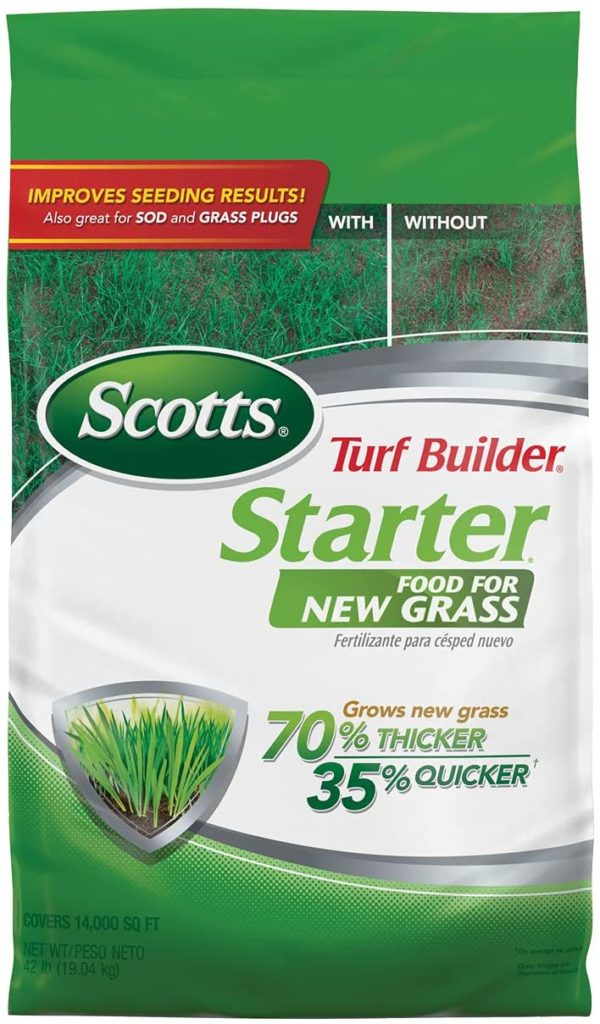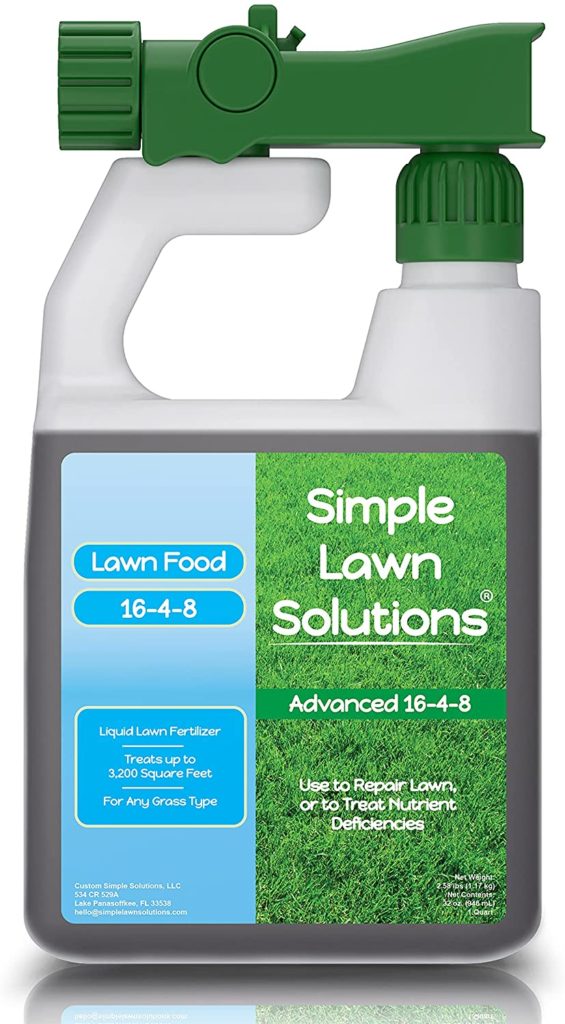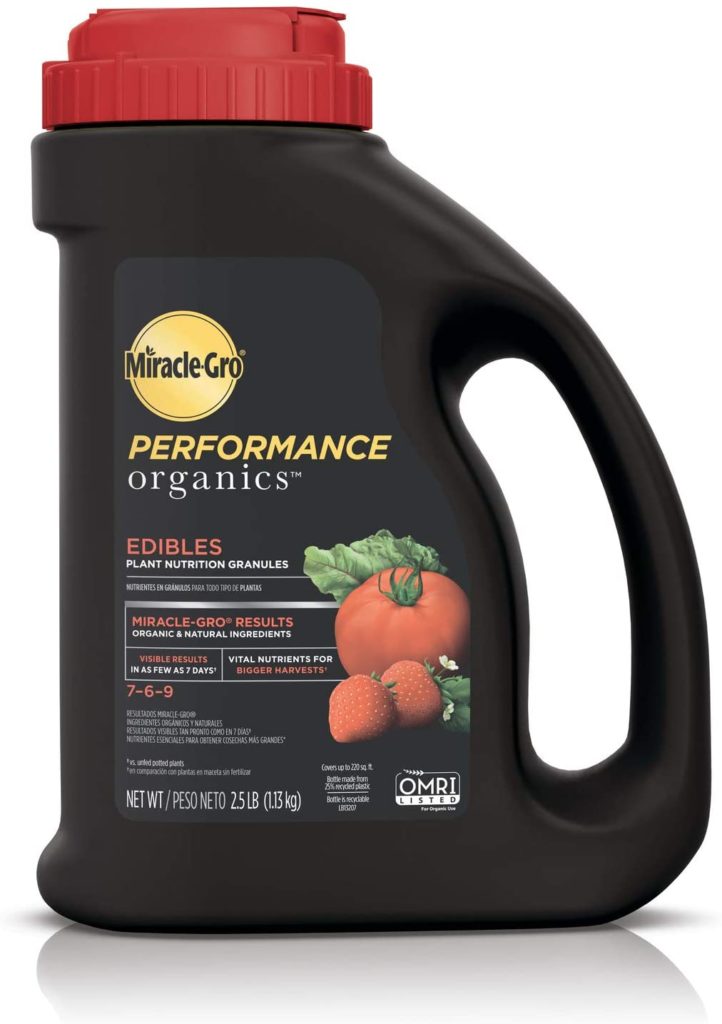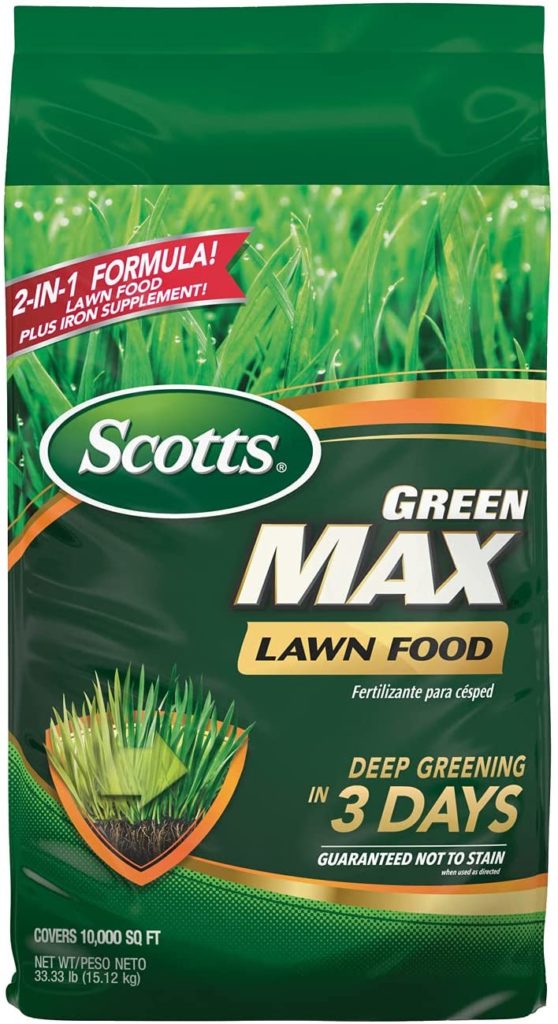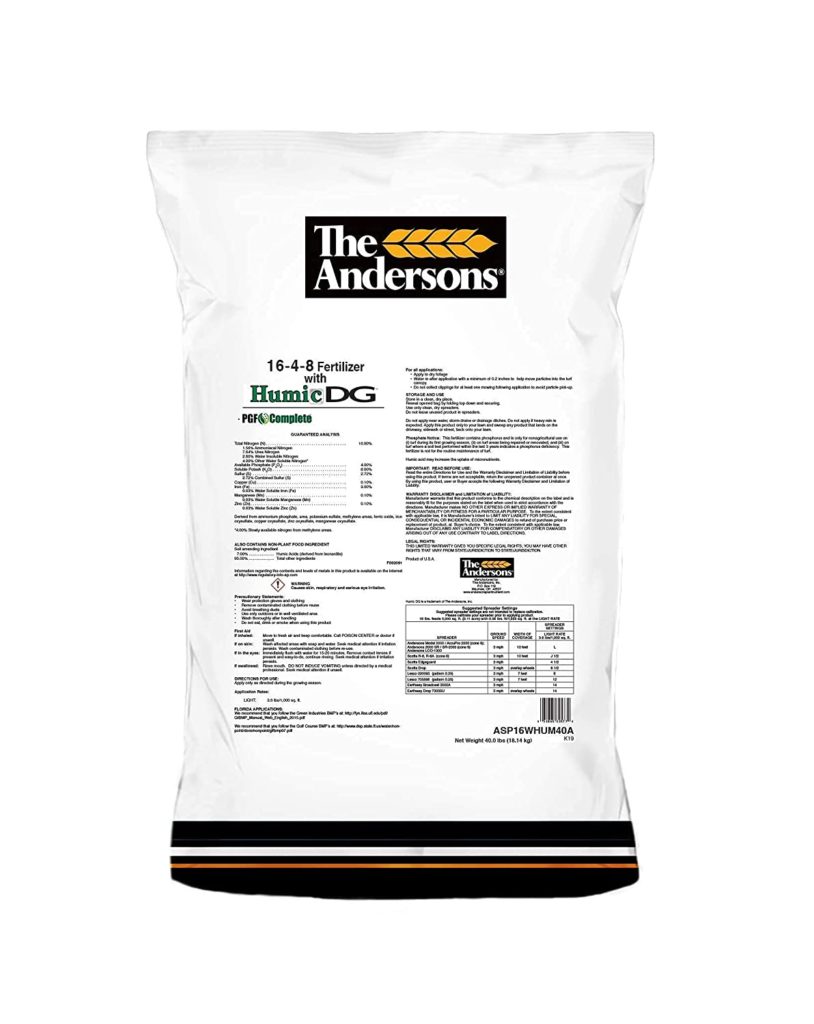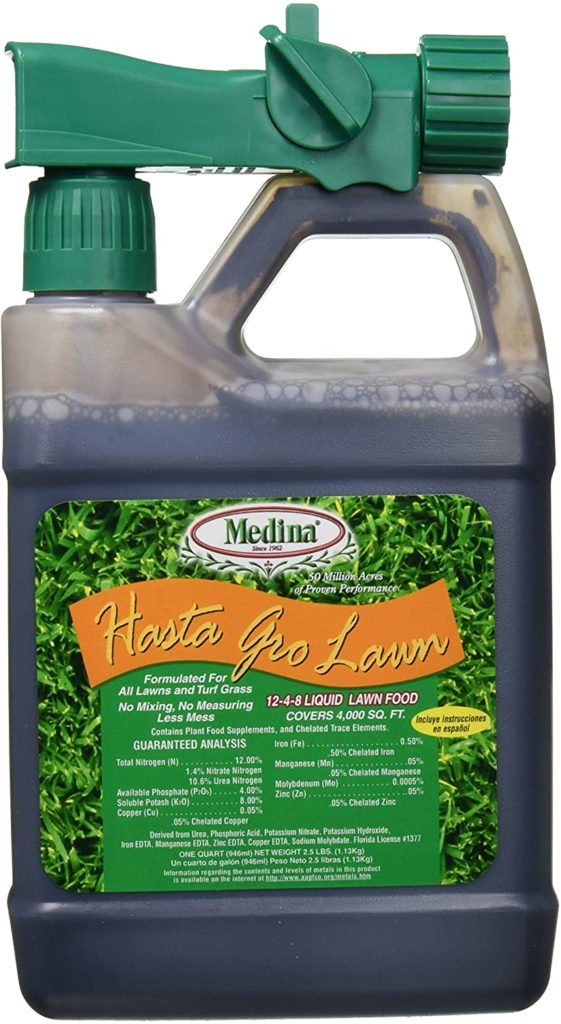More than 300 unique kinds of grasses belong to the genus Festuca. Each of these grasses has many uses and benefits, and shade tolerance is only one of those advantages. One of the reasons tall fescue is so popular is that it is resistant to various climatic conditions, including cold, heat, drought, and shadow. If you live in the proper place and have certain lawn goals, this adaptive grass might be a great alternative for you.
A slow-release fertilizer that is higher in nitrogen and potassium and lowers in phosphate is the perfect choice for tall fescue lawns that are already well established. On the other hand, fescue seeds and young grasses need an amount of phosphorus proportional to the amount of nitrogen they get.
Before you go out and buy and apply fertilizer to your Lawn, you need to first determine what kind of fertilizer it needs and how much. A test of the soil may provide you with the information you want.
You can conduct the test yourself using a kit designed for that purpose or request a test over the mail from the extension service in your area. This information will assist you in making a well-informed choice on the fertilization of your Lawn, so keep it close at hand.
6 Best Fertilizer for Fescue Grass
If the soil in your yard lacks the nutrients that plants need to thrive, fertilizing your grass may be a good idea to ensure it stays lush and green. Finding the right one for you might be challenging as there are so many lawn fertilizers on the market to choose from. For your reference, here are some of the best fertilizers for fescue grass.
1. Scotts Turf Builder Starter Food for Fescue Grass
If you want to feed your grass more vigorously while also bringing out the most vibrant green in it, the Scotts 44611A is the product that experts suggest you use. There is not a single granule in the package that is not made up completely of nutrients, and the recipe does not include any fillers either.
Your garden will soon begin to flourish to the extent that has never been seen before in such a short period.
This product will demonstrate how you may have thick, verdant grass growing in your yard in as little as three days. Because of its dual-action 2-in-1 composition, this solution also guarantees that your soil receives all of the essential micronutrients to thrive.
To get started, all you have to do is follow the instructions printed on the product’s container. Ammonium nitrate, urea, potassium sulfate, and iron sucrate were the only ingredients used in the production of this high-quality blend by the company.
The fertilizer has a nitrogen content of 27 percent, potassium content of 2 percent, a sulfur content of 10 percent, and iron content of 5 percent. The absence of phosphorus is the first thing that jumps out at you about the fertilizer.
Another advantage of using a fertilizer that is strong in sulfur is that it maintains the soil pH within the appropriate range for cultivating tall fescue. Its popularity might be attributed to the fact that the fertilizer can serve two purposes simultaneously.
As a result of the Tall Fescues and Iron supplement that the foliage includes, the color of the foliage will change to green in no more than three days.
Features:
- Compound: Granular fertilizer
- Ratio of NPK: 24-25-4
- Slow-release
- Effective for up to six weeks
- A total of 1,000 square feet is covered
Direction for Usage:
- After you have planted your new grass, it is essential to water it once a day, or more often if necessary, to maintain a moist soil environment for the plant to grow in
- Make sure to keep fertilizing your grass to keep it looking lush and healthy
- Get a spreader, fill it up, and distribute it over the seeded area or the whole lawn for a boost in root growth
- Finally, wait until the new grass has grown at least three inches tall before mowing the area
- Designed to support a wide range of root growth
- Recommendation for fresh, seeded, or sod lawns
- 70 percent quicker than unfed lawns to establish grass
- Cost-effective and easy to carry
- Some soils don’t need a lot of phosphorus
- Preventing nutrient runoff requires thorough preparation of the soil
2. Simple Lawn Solutions Liquid Fertilizer
Simple Lawn Solution is a well-known brand name in the business that deals with lawn care. They have been in business for close to three decades and have produced a wide assortment of thirteen lawn care items of a very high standard.
Take a look at this fertilizer as an example of their completed work to better understand what they’ve achieved. Your grass will benefit from the addition of 16 percent nitrogen, 4 percent phosphorus, and 8 percent potassium from the fertilizer, which contains high-quality feed-grade components such as organic seaweed and fish emulsion.
Furthermore, an NPK ratio of 16-4-8 is optimal for the growth of tall fescue. Several factors contributed to the decision to rank the product first overall. When it comes to using fertilizer, you don’t have to limit yourself to only putting it on Tall Fescues.
It is capable of managing a wide variety of grass species, including, but not limited to, Bermuda, St. Augustine, Zoysia Buffalo, Centipede, Fescue, and Kentucky bluegrass. The use of high-quality feed components may improve the quantity and quality of the nutrients found in the soil.
Last but not least, it is available in a liquid form that is ready to be sprayed. Because of this, the roots and the leaves of your Tall Fescue are in a position to absorb nutrients. Because of its high concentration, it’s the best option available.
Features:
- NPK ratio: 16-4-8
- Liquid fertilizer
- Seaweed and Fish are also included in the fertilizer
- Quick release
Direction for Usage:
- It is a fertilizer that is already in a ready-to-spray form. Simply connect the hose to the outlet, and then spray the solution in a uniform layer on the surface.
- However, you must remember to water your lawn within the first twenty-four hours after the application of the product.
- Even and uniform application
- Phosphorus is better absorbed in the grass
- Better for young lawns
- It’s simple to use
- Setup or application is costly
- It needs to be applied more often
3. Miracle-Gro Performance Organics Edibles Plant Nutrition
Miracle’s slow-release Fertilizer in granular form is produced by Gro’s. The product is a well-known brand in the gardening industry, and this organic product is often recommended by farmers.
The 7-6-9 nutritional level is recommended above any of the others on this list for Fescue grass that has reached its maximum maturity. Because of its ground-breaking approach to the design of the lid, this product offers the industry’s most user-friendly operation, to put it another way.
Having this option available is great when the temperature outside is 110 degrees in July, and you want to spend the day indoors. This fertilizer lacks nutrients, which is a problem. Because of the plant’s relatively low phosphorus concentration in comparison to its relatively high nitrogen content, the plant’s foliage growth is greatly enhanced.
The larger potassium concentration may, however, be useful to you if the circumstance demands it. There will always be growth, no matter what occurs!
Features:
- NPK ratio: 7-6-9
- Granular fertilizer
- OMRI listed
- Slow-release fertilizer
Direction for Usage:
- Applying the fertilizer to your container plants without first mixing it with water and then applying it dry is the best way to provide nutrition for your lawn. When compared to potted plants that have not been fed, the results might potentially be apparent in just seven days.
- Make sure that you read the label on the product so that you are aware of all of the information.
- Slow-releasing
- Encourages rapid development and growth
- Organic
- Micronutrients are plentiful in this food
- Phosphorus concentrations are lower
- Due to its simplicity of usage, it’s easy to overuse it
4. Scotts Green Max Lawn Food
The very name of this product gives the impression that it would provide your Lawn with an exceptionally high volume of greens. The following are only a few reasons this product is completely dependable and efficient for Tall Fescues: Only five synthetic sources were used to produce this premium combination.
The fertilizer has a nitrogen content of 27 percent, potassium content of 2 percent, a sulfur content of 10 percent, and iron content of 5 percent.
The absence of phosphorus is the first thing that jumps out at you about the fertilizer. This is the best fertilizer to use in the late winter or fall on tall fescue that has already been established.
Another advantage of using a fertilizer that is strong in sulfur is that it maintains the soil pH within the appropriate range for cultivating tall fescue. As a result of the Tall Fescues and Iron supplement that the foliage includes, the color of the foliage will change to green in no more than three days. Additionally, the sun never stops shining, not even on the hottest days of summer.
Features:
- Granular fertilizer
- NPK ratio: 27-0-2
- Nourishes for up to two months
Direction for Usage:
- It is a fertilizer that comes in granular form. Accordingly, adjust the spreader’s settings and begin spreading
- Reapply every six to eight weeks for better results. For more information, refer to the product label
- Deep greening in only three days for a greener lawn
- There is no smelly odor
- It can be used on any kind of grass throughout the spring, summer, and autumn
- It’s not recommended for usage around dogs
- Inorganic fertilizers
5. The Andersons Professional PGF Complete Fertilizer
Anderson’s used non-hazardous inorganic components such as ammonium phosphate, urea, potassium sulfate, ferric oxide, and other similar components to produce this fertilizer. In addition, these compounds have a composition of 16 percent nitrogen, 4 percent phosphorus, 8 percent potassium, 2.72 percent sulfur, 3 percent iron, 0.10 percent copper, 0.10 percent manganese, and 0.10 percent zinc.
It would seem that the company has done an outstanding job of ensuring that the soil on the Lawn has a plentiful supply of micronutrients. The nutrients included in this fertilizer are entirely water-soluble, except for a trace quantity of nitrogen.
There is a possibility that Tall Fescues will depend on the slow-release nitrogen provided by the fertilizer for up to eight weeks. And because of the quick and long-term feeding mechanisms, Fescue Grass may benefit from slow-release fertilizers such as this.
In addition, the balanced growth of your plants is ensured by the nutrient composition of this medium’s make-up. In lawn areas where the grass is less green and less remarkable due to the lower nitrogen strength of the fertilizer, it is necessary to increase the number of nitrogen particles that are applied. In addition, there is no risk that your plants will suffer any harm due to your actions.
Features:
- NPK ratio: 16-4-8
- Slow release
- Granules
- Easy to apply
Direction for Usage:
- Mow the grass first, then apply the product
- Apply to areas of dry plant leaves
- After you’ve applied it, be sure to wet it down at least 0.2 inches deep. To prevent picking up any particles in the clippings collected after the treatment, wait for at least one mowing before doing so
- Use 50-75% of the regular rate in the summer on cool-season grasses. Centipede lawns need a 50 percent reduction in the typical application rate
- During the growth season, PGF Complete may be applied every six to eight weeks
- Extra-fine particles that provide TWICE the number of particles per square foot compared to standard particles. The more particles, the better and more evenly distributed they are
- A low nitrogen concentration enables the application of a greater number of particles per square foot
- Feeds for up to 8 weeks on a low dose
- You can use Humic DGS to improve the quality of your soil and help your plants better use nutrients
- It is a bit pricey
6. Medina 12-4-8 Ready-to-Spray HastaGro Lawn
The year 1962 saw the commencement of operations for Medina Agricultural Products Co. Inc., a microbe stimulator company still in business today. The Medina HastaGro Lawn food is among the most effective of the lawn food products made available by this company.
It is an inorganic fertilizer since all components, including urea, phosphoric acid, EDTA iron, and sodium molybdate, are man-made.
Every single one of them is a source of both macro and micronutrients. Because it dissolves easily in water, the fertilizer will start nourishing your grass almost as soon as you apply it. Chelated iron, manganese, and zinc are included in this lawn fertilizer for added benefits.
The use of humic acid as a root growth stimulant is quite successful. As a consequence of engaging in this technique, the soil will exhibit increased capacities for nutrient absorption, microbial activity, and resistance to drought.
The addition of 0.50 percent humic acid to this lawn food is certainly a positive development. With the help of Medina Soil Activator, the organisms in the soil may have a better chance of flourishing. Consequently, the lawn food boosts the fertility of the soil, turning it into an environment that is optimal for the growth of lawn grass.
Features:
- NPK ratio: 12-4-8
- Coverage up to 12000 square feet
- Slow release
Direction for Usage:
- Do this for four weeks in spring by filling the hose end with water, setting the mix ratio to 50%, and spraying it once a week for four weeks
- Use once a month throughout the growing season for the best results
Also Read: What is the Best Lawn Fertilizer Ratio?
- Immediate results are guaranteed
- Exceptional coverage
- Grass quickly and efficiently absorbs nutrients
- Natural soil microorganisms are stimulated
- It’s a little on the pricey side
- Using the bottle is a bit of a struggle
Frequently Asked Questions
It’s cool-season grass. These grasses usually go through a semi-dormant stage in the summer. As a result, growing them in the hot sun is difficult. On the other hand, the following suggestions will help you maintain a lush lawn even in the height of summer.
• Taking care of your grass regularly is the first step. Apply insecticides and herbicides, and fertilize your lawn and garden as needed
• Second, use iron-fortified fertilizer in the late spring. Even in the heat of July, the Fescues will remain lush and green
• Brown spots are a warning sign. It’s always possible to reseed the damaged area and maintain it lush for longer
The lifetime of tall fescue is not very lengthy, but while it is growing, it may be utilized as an indoor container plant to provide aesthetic appeal to the room. A lot of sunshine is needed to grow.
The tall fescue grass grows best during the cooler months. Tall Fescue lawns thrive in the autumn and early spring if you’ve ever observed. This is when Tall Fescues build their root systems, green their leaf blades, and grow taller. In addition, now is the ideal time to apply fertilizer to your Tall Fescue lawn or garden. Listed below is a tall fescue fertilization schedule for your reference.
• In the Fall (September, October, November)
• Late Winter (February)
• As of mid-spring (April)
According to a University of Arkansas study, the best time to fertilize Tall Fescues is October, November, and April.
Conclusion
The value of your house may be positively affected directly by the appearance of your grass. Similar to the first impression that people get of your home, the overall attractiveness of your yard may be affected by something as little as a small bit of damage or browning.
One of these types of sod grass is tall fescue, which needs minimal maintenance in mowing and fertilization. It will need watering more often and thoroughly throughout the year’s warmer months.
It is suitable for usage as a lawn in areas that get either full sun or partial shade. As a result of this, you should pay close attention to the condition of your Lawn. To maintain your Lawn’s healthiest and most attractive appearance, fertilize it with premium Tall Fescue Grasses.

